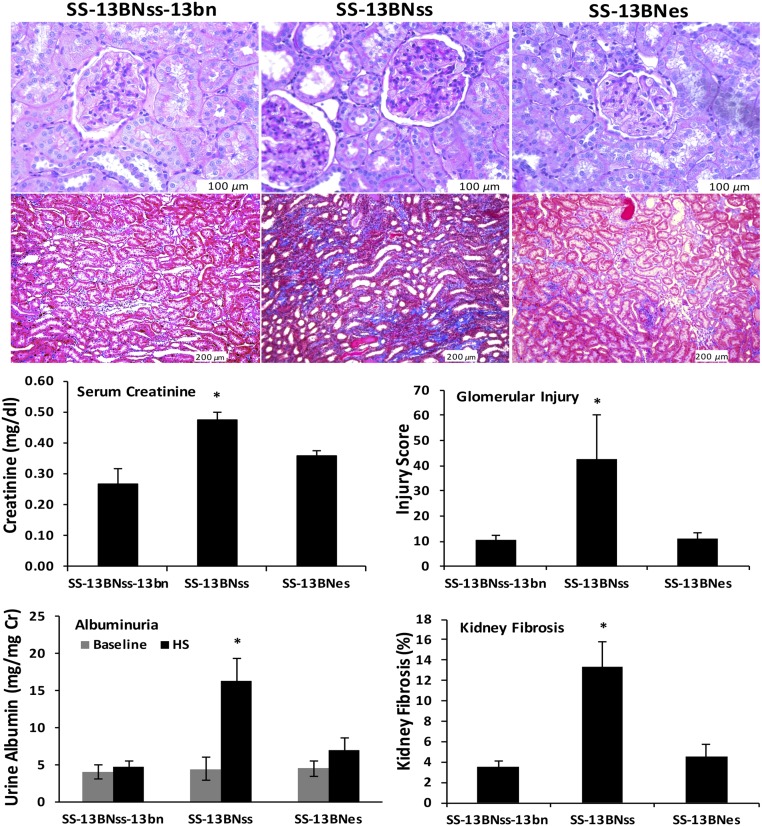Figure 6.
Kidney allografts with a single Ets-1 mutation showed significantly reduced glomerular injury and renal fibrosis, and improved kidney function in SS-13BNes, comparing to that in SS-13BNss during HS intake. Representative PAS-stained and trichrome-stained kidney sections were included in the top panel. Semiquantitative analyses showed that, compared with the SS-13BNss-13bn and SS-13BNes groups, glomerular injury and kidney fibrosis were increased in the SS-13BNss group (bottom right graphs). After 2 weeks on the HS diet, mean serum creatinine concentrations (left) were greater in SS-13BNss, compared with the other two groups (SS-13BNss-13bn, 0.27±0.05; SS-13BNss, 0.47±0.03; and SS-13BNes, 0.36±0.02 mg/dl; P value <0.05). Albuminuria (bottom left) did not differ among the three groups of rats during the LS intake (BNbn, 4.14±0.95; SS-13BNss, 4.46±1.52; and SS-13BNes, 4.54±1.07 mg/mg Cr). Mean urinary excretion rates of albumin were greater in SS-13BNss rats than values observed in the SS-13BNss-13bn and SS-13BNes rats during HS intake. The Ets-1 mutation in the kidney resulted in significant reductions in albuminuria in SS-13BNes rats (SS-13BNss, 16.39±2.97 versus SS-13BNes, 6.99±1.59 mg/mg Cr; P value <0.05); n=7 animals in each group. Cr, creatinine.

